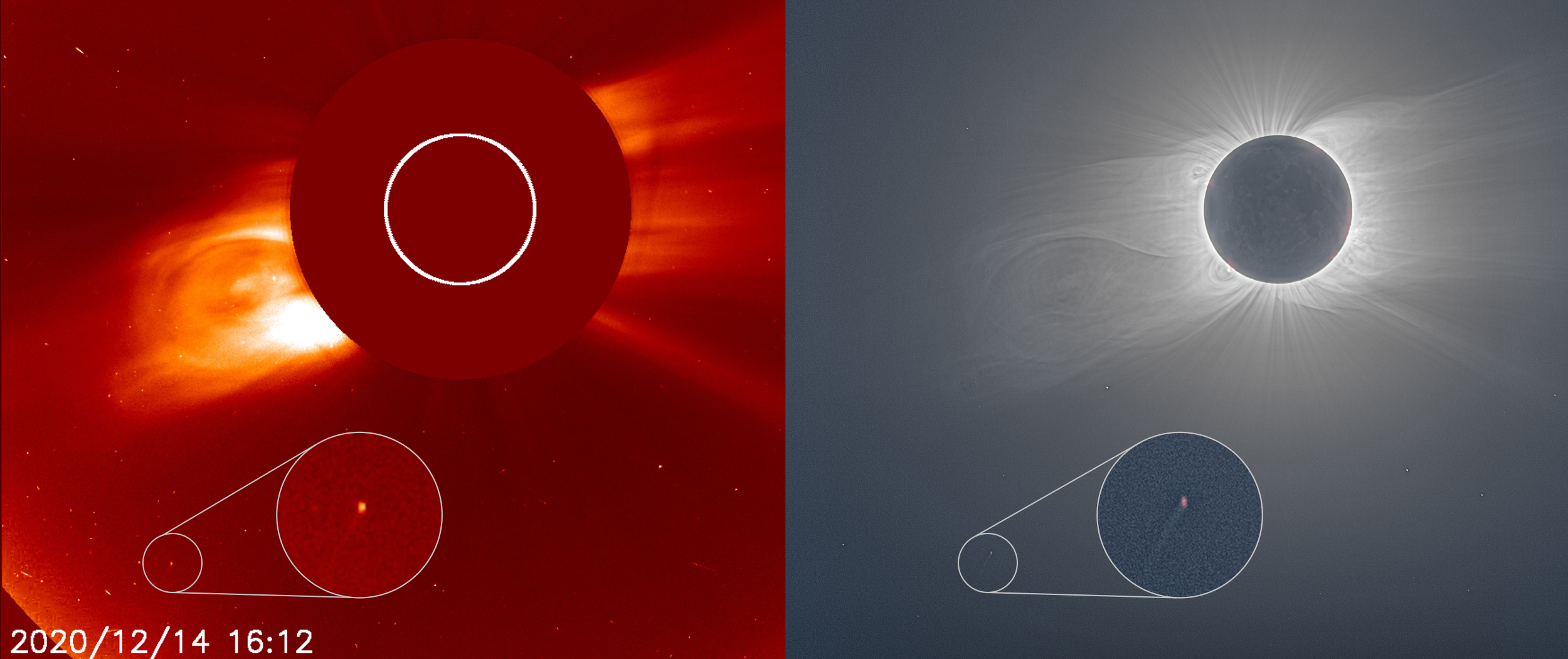This tiny comet photobombed the total solar eclipse of 2020
An amature astonomer found the Kruetz sungrazer comet a day before it disintegrated when passing too close to the Sun.

A comet first spotted just the day before made an appearance as Chile and Argentina watched the total solar eclipse on Dec. 14, 2020.
Just a tiny speck in the sky, the comet, dubbed C/2020 X3 (SOHO), was traveling at roughly 450,000 mph (720,000 kph), about 2.7 million miles (4.3 million kilometers) from the sun's surface when the moon passed in front of our star.
Thai amateur astronomer Worachate Boonplod first saw the comet on Dec. 13 through the NASA-funded Sungrazer Project, which helps amateurs search for and discover new comets in images from a joint European Space Agency (ESA) and NASA mission, the Solar and Heliospheric Observatory (SOHO).
Related: Amazing photos of Comet NEOWISE from the Earth and space
Knowing that the eclipse was coming, Boonplod was interested to see whether the newly identified comet might show up in the sun's outer atmosphere.
Lo and behold, it did; at just around the time of the eclipse , the comet was rushing by. The object is a type of comet called a "Kruetz" sungrazer, which means it is a fragment of a much larger parent comet that broke up over 1,000 years ago and continues to orbit around the sun.
Comet hunters most commonly find Kruetz sungrazers in SOHO images, which mimic total solar eclipses: A solid oscillating disk in the SOHO camera blocks out the sun's blinding light to reveal dimmer features in the sun's outer atmosphere. The comet Boonplod found was the 3,534th known Kreutz sungrazer.
Breaking space news, the latest updates on rocket launches, skywatching events and more!
Unfortunately, the comet met its end shortly after Boonplod discovered it. The icy rock, which was 50 feet in diameter (150 meters, or about the length of a semi truck), disintegrated into dust a few hours before reaching its closest point to the sun, unable to handle the intense solar radiation.
Follow Kasandra Brabaw on Twitter @KassieBrabaw. Follow us on Twitter @Spacedotcom and on Facebook.

Kasandra Brabaw is a freelance science writer who covers space, health, and psychology. She's been writing for Space.com since 2014, covering NASA events, sci-fi entertainment, and space news. In addition to Space.com, Kasandra has written for Prevention, Women's Health, SELF, and other health publications. She has also worked with academics to edit books written for popular audiences.
